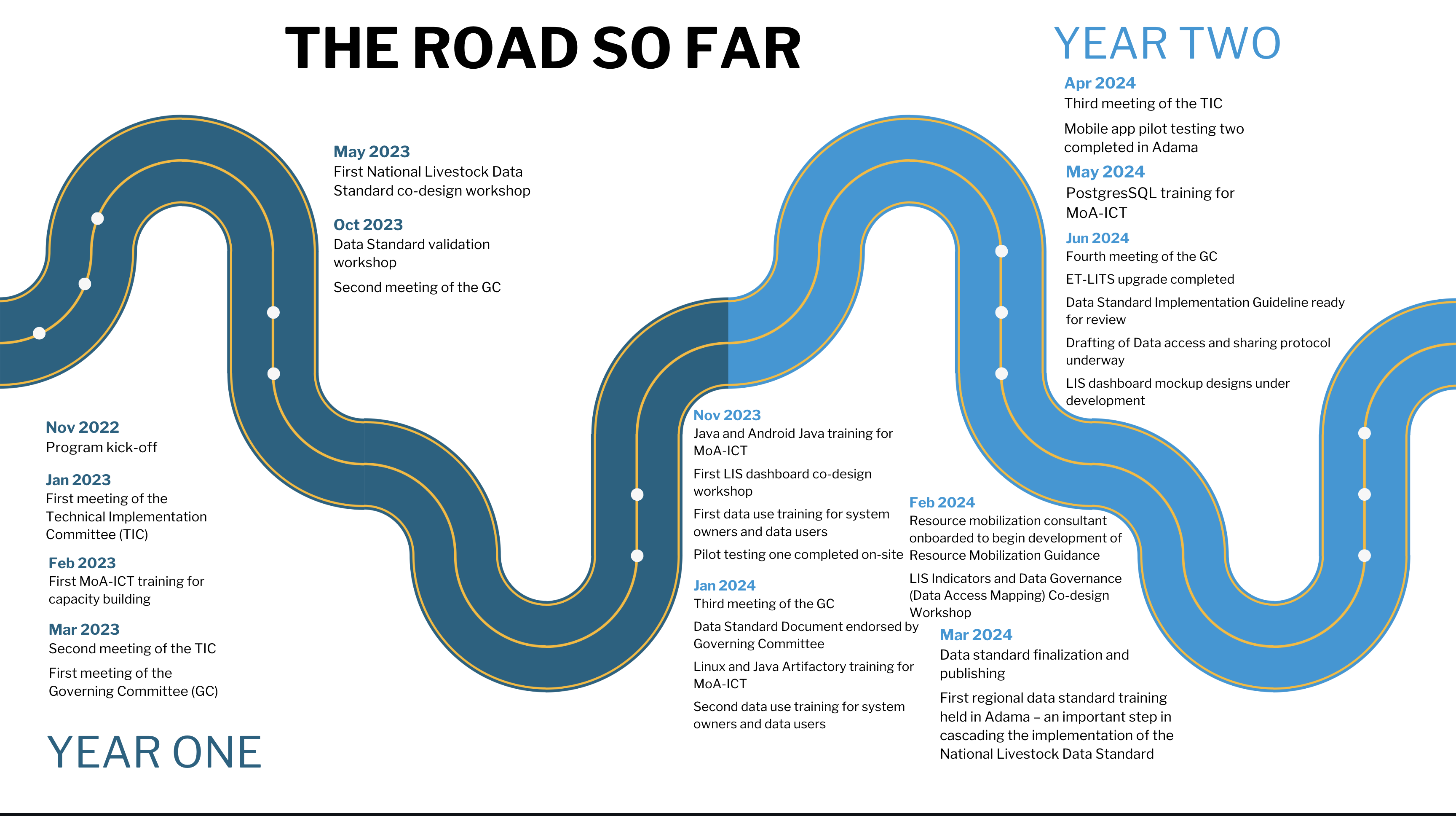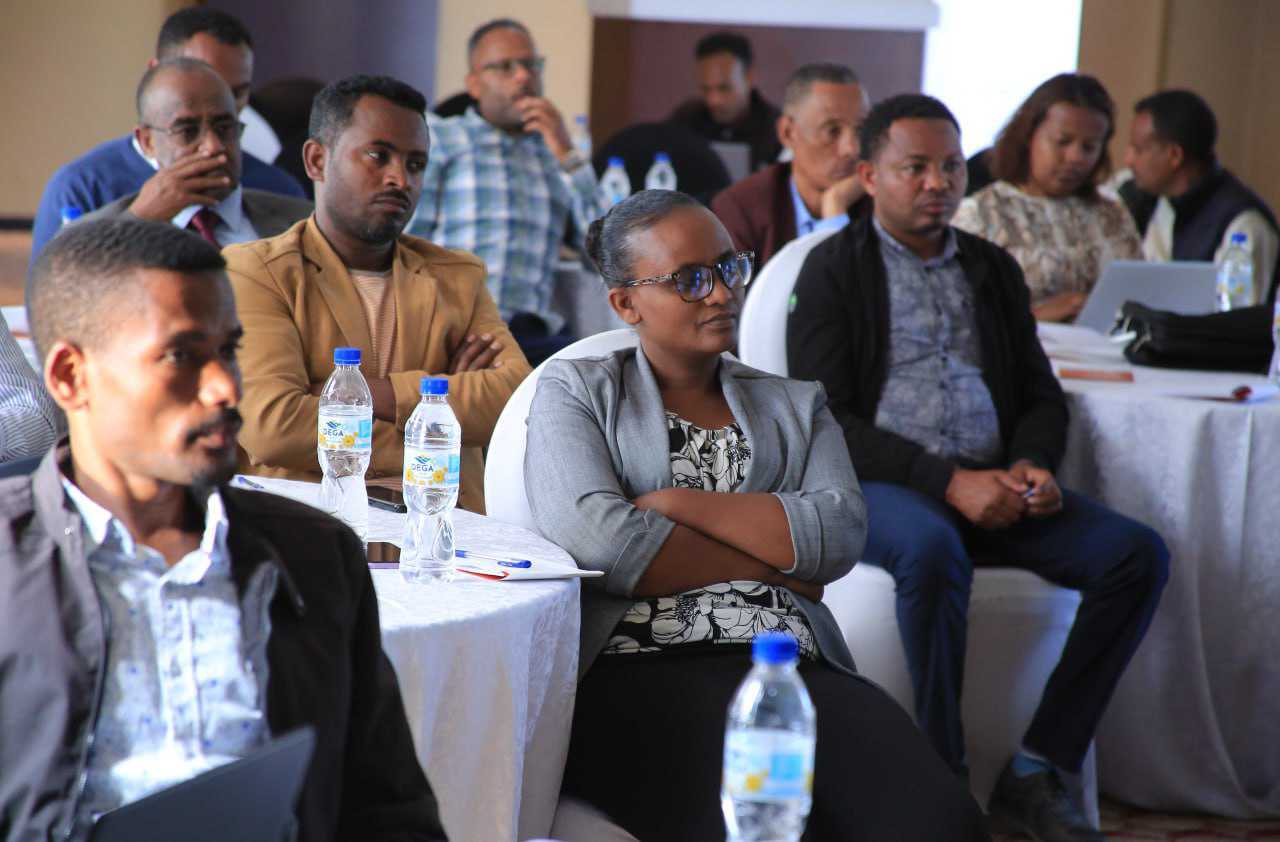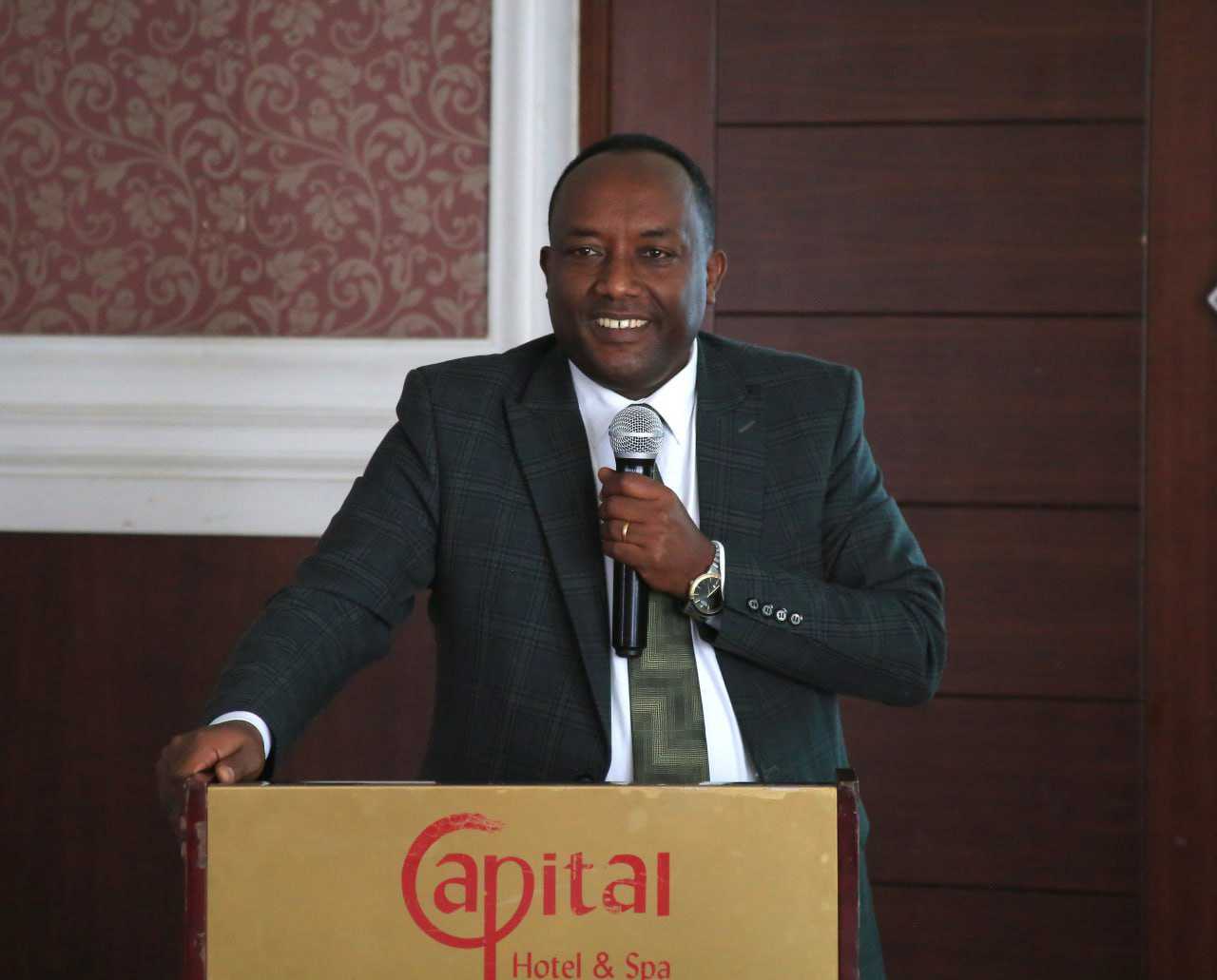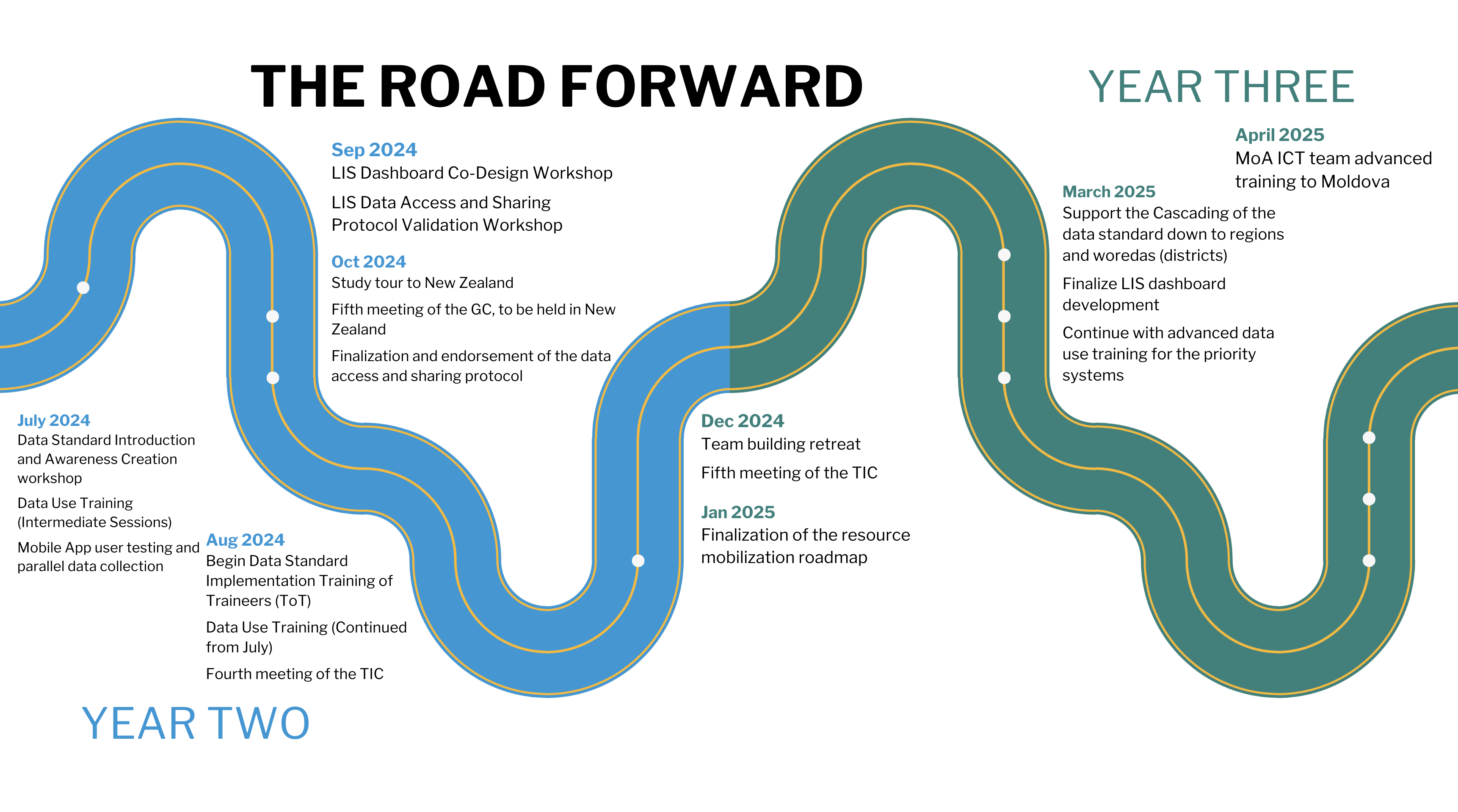Connecting Digital Dreams to Infrastructure Needs: Three Lessons from the aLIVE Program
Eighteen months ago, we launched the aLIVE program in Ethiopia. After a year and a half of hard work, we’ve made strides towards meeting the program’s ultimate goal of supporting Ethiopia in achieving food security and building a more robust, independent economy. We’re doing this by supporting Ethiopia in improving the accessibility and reliability of its livestock data. Along the way, we’ve learned three valuable lessons that have improved our ability to support our partners in Ethiopia in advancing their livestock data systems while also building capacity in order to optimize management, operations, and use of their data systems after the aLIVE program ends.

Lessons learned
- Create trust and sustainability through co-design: Through aLIVE, we’ve continued to learn that prioritizing co-design deepens the impact of the program’s work, strengthens partnerships while expanding trust, and makes the work more sustainable in the long run.
Throughout DG’s work, co-design has been prioritized to foster trust and collaboration between DG and those living and working in the communities impacted by our programs. With aLIVE, we’ve maintained our approach to co-design by ensuring that collaboration is embedded at every level. In addition to a series of workshops and discussions with partners to develop the Data Standard (a guide to standardize data collected on cattle, sheep, goats, and camels), we also used a co-design process to develop the Livestock Information System (LIS) dashboard, which is a platform that will provide decision-makers with access to interoperable data from Ethiopia’s pre-existing livestock data systems, and to identify data indicators that are aligned with stakeholders’ needs and once in place, will help the user find the information they need.
We’ve seen positive outcomes from our co-design approach, as evidenced by leadership and major national level livestock actors actively giving feedback and providing concrete goals for how the work done in aLIVE will change the way Ethiopia’s livestock stakeholders will use tools developed through the aLIVE program. Stakeholders have been actively involved throughout the program indicating that they are deeply invested, feel a sense of ownership, and—because of this—that the work done in aLIVE will likely continue beyond DG’s direct involvement.
LIS Co-Design Workshop - Advance collaborative work by embedding staff and establishing governance structures: In aLIVE, we’ve also strengthened our partnership with Ethiopia’s MoA and other stakeholders by embedding staff with multiple teams at the MoA. This approach of embedding staff has also improved DG’s understanding and awareness of the livestock-sub sector, which has allowed us to have better interaction with stakeholders.
While embedding staff isn’t uncommon, we ensured that our embedded staff were able to be full-time with the team(s) on which they were embedded. This allows these staff members to better share DG-developed resources while being fully committed to the program’s work from our partner’s side. Embedded team members were on such teams as programming, software engineering, and data analysis.
While embedded staff members were able to advance aLIVE’s work from within our partners’ teams, we also established two governance structures in the form of a Governing Committee (GC) and the Technical Implementation Committee (TIC) in order to facilitate buy-in from stakeholders at different levels and with different expertise. The GC is the final decision-making body and provides overall governance, strategic direction, and support for the sustainability of aLIVE’s work. Its members include the State Minister, national minister leadership from the MoA, the Ministry of Trade, and representatives from other organizations within the MoA (such as owners of the other data systems managed by the MoA). The TIC includes experts who provide technical guidance, support, and expert advice for the aLIVE project team.
Through both committees, stakeholders have a constructive space to highlight gaps, opportunities, and resource needs that the broader government leadership can take under advisement. Therefore, communication between implementers and decision-makers is more direct and timely. Additionally, the governance structures have created more visibility around aLIVE’s work at a high-level within Ethiopia’s government, which has allowed DG to connect with related development projects, which supports alignment and knowledge sharing throughout the government and across programs.
Prof. Alemayehu Regassa, aLIVE Program Senior Advisor - Increase sustainability by ensuring program recommendations and approaches align with partners’ needs and resources: Because a key component in aLIVE’s work is streamlining and expanding livestock data as well as increasing access across data systems, we explored which type of infrastructure is best for our partners: cloud infrastructure or on-site servers. After detailed deliberations, the MoA opted to continue with the on-site servers which were recently installed, recognizing that investment had gone into developing these state-of-the-art server facilities. After all, the on-site servers suited the needs, wants, and technical capacity of the MoA. In making this decision, we were able to support self-management, operations, and sustainability by understanding the local context, the government’s digital infrastructure aspirations, and the government’s technical capacity.
As part of this effort to advance sustainability and support our partners in Ethiopia, we trained relevant MoA staff on the new data management information systems built through aLIVE. This training was intended to expand the MoA staff’s capacity and was tailored to their backgrounds and needs. We also developed an on-demand training after participants expressed an eagerness to continue learning about new technologies beyond this initial training.
MoA-ICT team training
Looking forward

As we mark a year and a half of the aLIVE program, we also approach the halfway mark of the program itself, which is set to end in 2024. In reflecting on the lessons we’ve learned so far, we’re excited to see continued progress and learning in the next half of aLIVE.
Going forward, we’ll move into implementing the Data Standard; we will also continue to implement a mobile app which will simplify the process of recording livestock data in both offline and online modes. The app will eventually be handed over to the team at the MoA and those managing the Ethiopian – Livestock Identification and Traceability System (ET-LITS). Finally, the aLIVE team is planning a study tour to New Zealand in late 2024 in order to identify best practices from the country’s livestock data system that can be implemented in Ethiopia.
If you’re interested in receiving more detailed updates on the program’s activities, sign up for our quarterly newsletter.